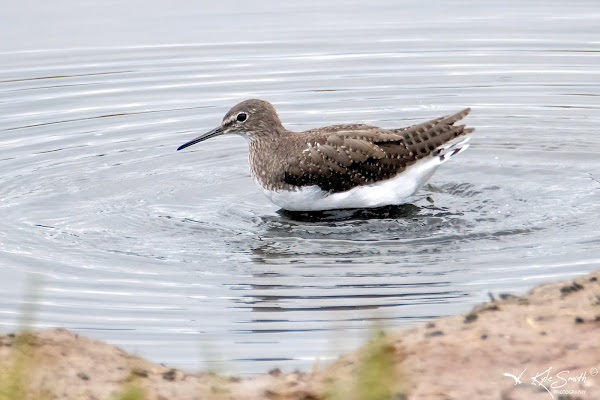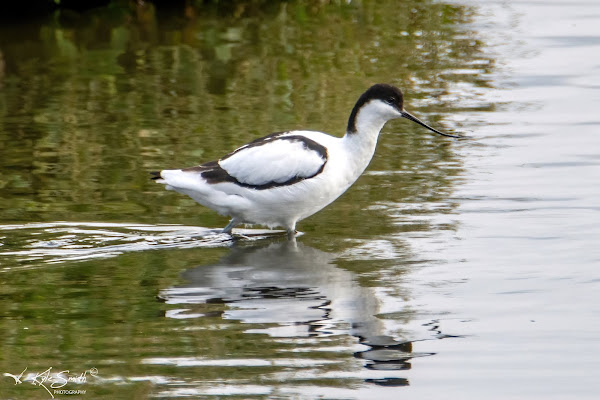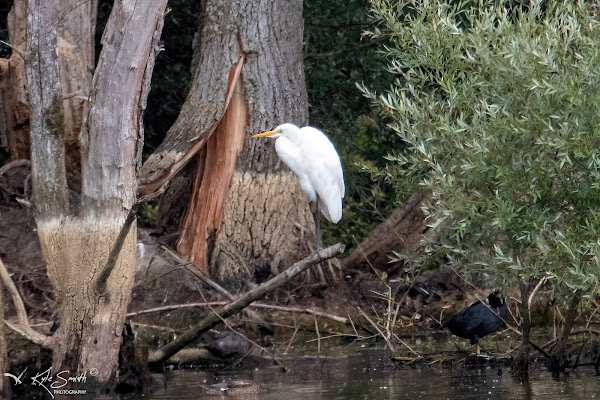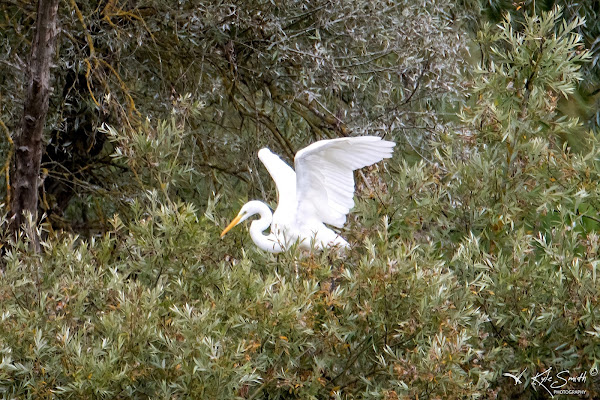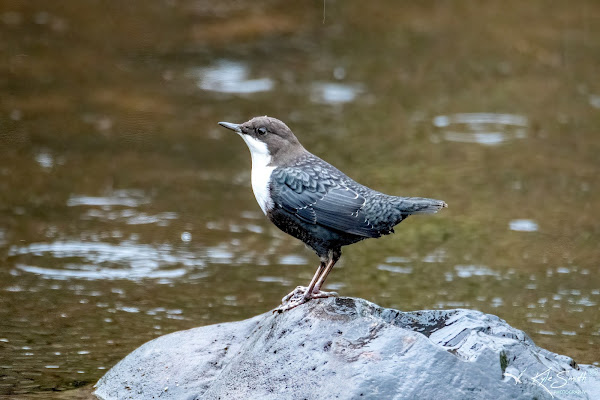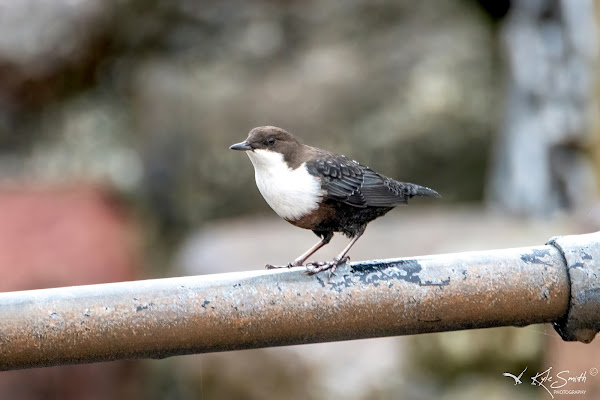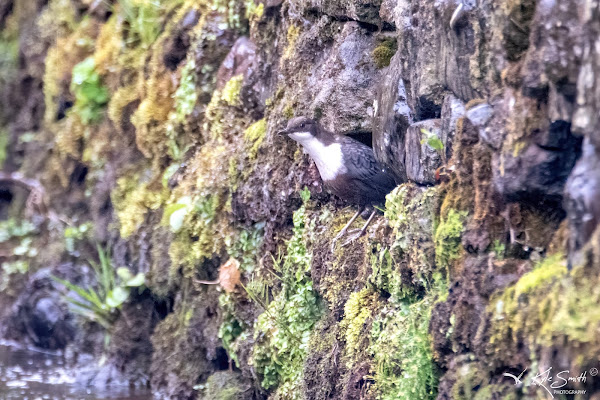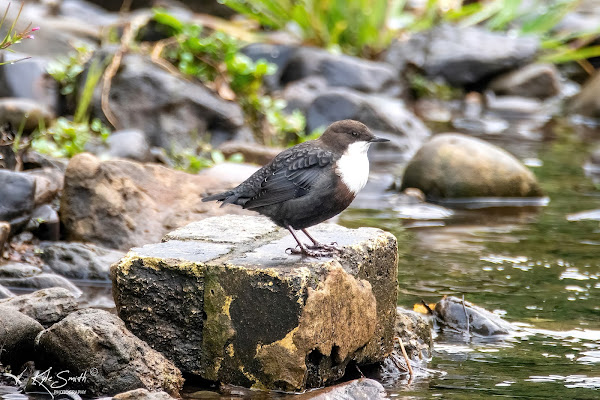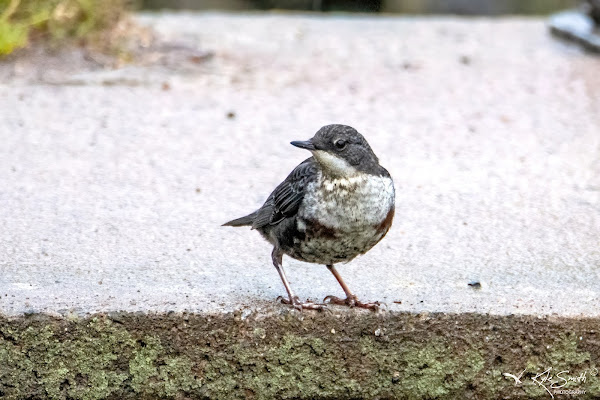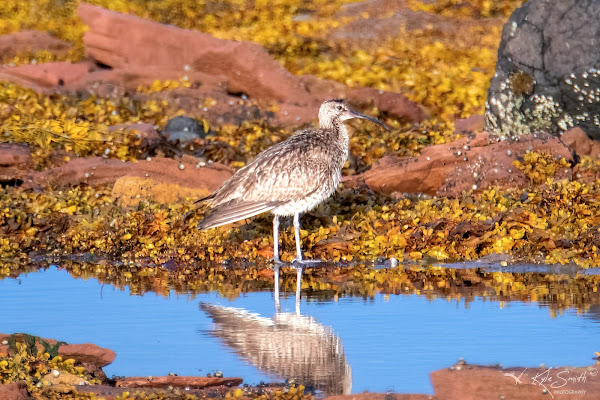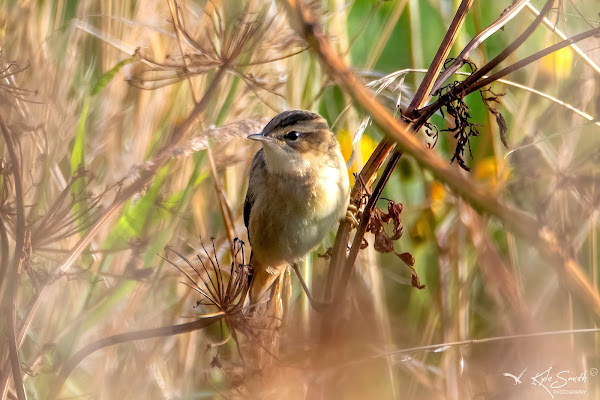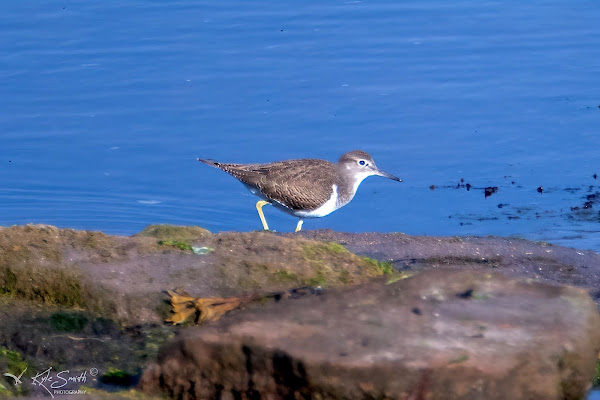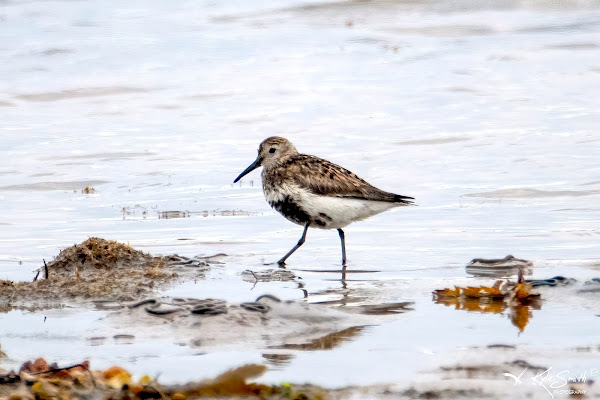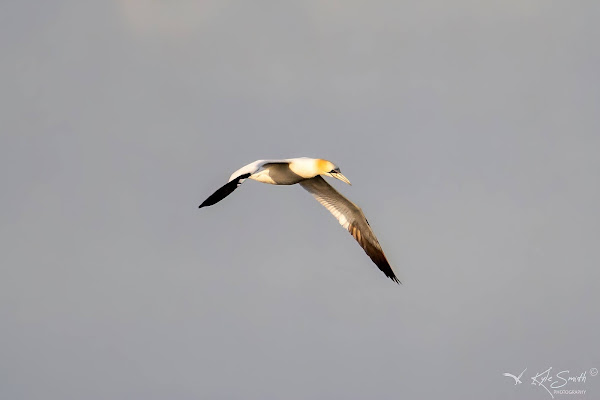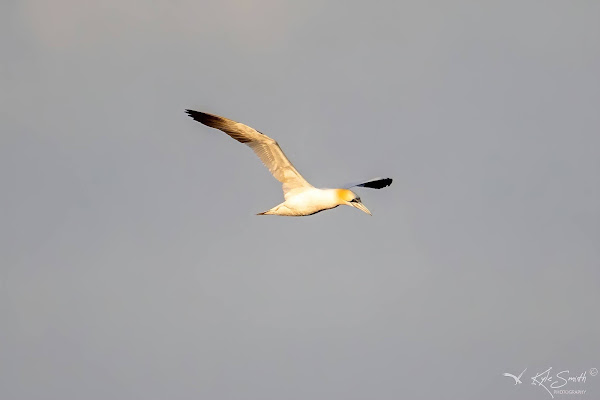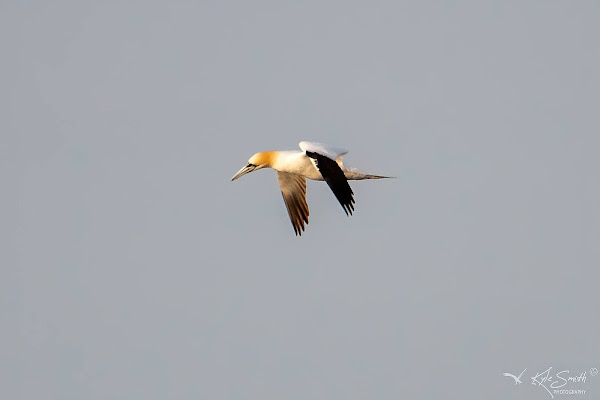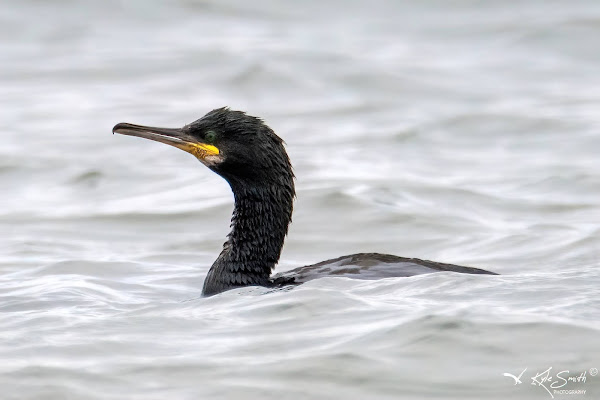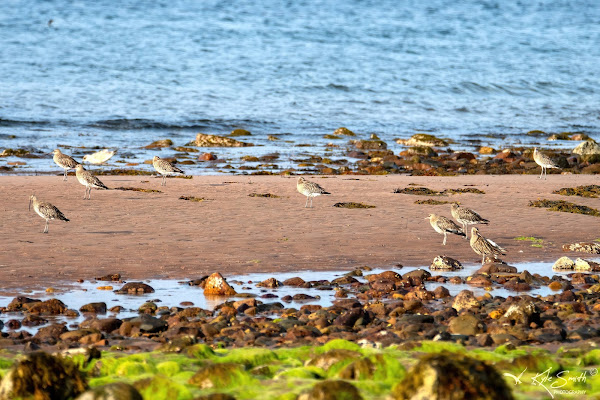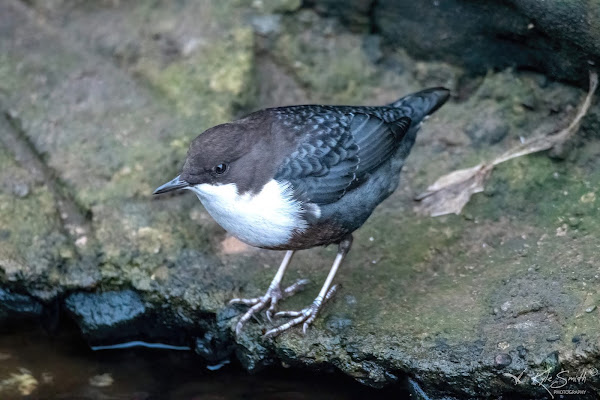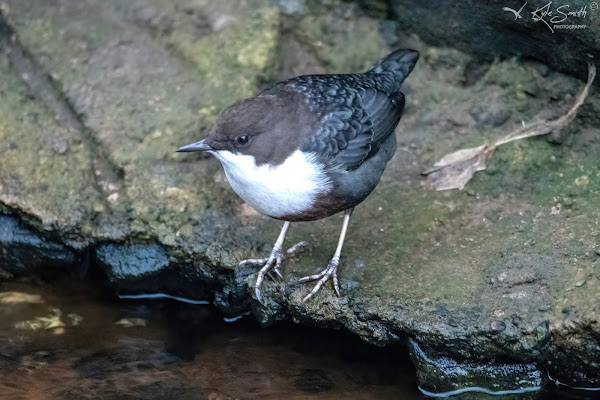This pandemic has resulted in an absence of many things but my regular trips to visit family in Scotland has been a big one. We hadn't been since November and even that was a fleeting visit and for all the wrong reasons - prior to that it had been Christmas 2019. The weather on the way up was horrible with occasional aquaplaning in the car, and reduced visibility due to the intensity of the rain.
Monday morning arrived and I arose early, looking out the hotel window over the garden, beach and onto the water. There was a very slight residual drizzle, and I was in two minds whether to venture out - hell, I hadn't been for such a long time, and the drizzle was only light, so I got dressed and snuck out. Onto the beach and I could see the usual roost of gulls on the rocks as the sea had already largely gone out - a shame as I prefer incoming tides; there were great black-backed, lesser black-backed, common and black-headed. A couple of curlew; oystercatches fed amongst them and along the water’s edge.
I decided to head south and approached the small bridge over a burn that runs down the side of the Seamill Hydro Hotel. As I'd hoped, three dippers were feeding around the bridge and the rocks beyond - two adults and a juvenile. I stopped to take photos, extending the ISO due the early hour and overcast sky. They treated me well and landed on the bridge itself, on one occasion in a pair. It was worth coming out just for that.
I made my way over the bridge and found that my usual path to the rocky point beyond was overgrown; so circled round the scrub on the southern edge and doubled back - other than more gulls and curlew I didn't see anything extra so continued on, pulling the waterproof cover over the camera and lens and then popped the lens cups over the bins.
I saw redshank in the pools but too distant for a photo and eventually reached the point at which I climb off the beach and onto the path, right at the end of the village. Here I could see a couple of common sandpipers feeding but as I took a quick snap they took to the wing and moved well out of reach. This though left a rather confiding juvenile dunlin at relatively close quarters - I stood for a while, watching it feed.
As I watched a flock of waders flew past; initially I wondered if they might be black-tailed godwit but reviewing a quick photo they turned out to be oystercatchers (27) on the move.
Along the next stretch I heard and then saw a couple of sedge warbler but really too far out of view, even for a record shot. I reached my usual spot for rock pipit and found only pied/white wagtails. Making my way out to the point of rocks into the water I then saw a couple of meadow pipit and then at last a couple of rock pipit. Soon a couple more showed a bit closer. As I stood, I could see three sandwich terns out to sea, with only gannets and passing shag further out.
With the sea still out there didn't appear to much else to add and so I made my way back for a shower and breakfast.
The following morning started brighter, and the forecast was set fair - hoorah. Again, I stopped at the burn and was treated by the dippers - not on the bridge this time but still good views.
I repeated the route from the previous morning, but this time my trousers didn't get wet from brushing through the grasses. I then made a concerted effort to try and pick out a whimbrel from the numbers of curlew showing. This was all in vain until quite a bit further on I had some luck, and a single individual was in view - another year tick! - not a strong stripe through the eye but the black crown in evidence.
The sedge warbler showed again as I passed but this time there was a samll porthole through which I could see the bird fully, and then the rock pipits dropped in for their photo.
Offshore I could see some birds on the move and discovered a group of eight manx shearwaters, just discernible with my bins - the photos just turned out to be black blurry blobs. As I turned for home, I heard a call and on investigating found a single ringed plover - soon after three others flew past at some distance. It was quite approachable, and I could get a decent view and a photo.
As I reached the first houses I saw four common sandpiper, but two of them also saw me and flew off. I did get a short time with the remaining two, but it wasn't long before they also departed.
Later that day we were in Troon having fish and chips from the 'Wee Hurrie" on the quayside when Charlotte pointed at some rocks and said she'd seen something move (and it wasn't a seal, perhaps an otter?). It was at distance but after a while I found that she was right, and an otter could be seen diving and feeding in the surf - we watched for a few minutes until it was lost from view - a great encounter. Well done Charlotte!
The next morning I set out again and decided to make a change this time heading along the beach towards Portencross. The first stretch is mainly sand and other than the usual suspects there was nothing new to add. Passing the West Kilbride golf course, a small flock of curlew (25) took to the air, split up and headed both to the north and south. I went to the edge of the course but couldn't pick out any stragglers - there had been others on the water’s edge so a good number on show. I found a small flock of ringed plover and dunlin around an expanse of rocks covered in seaweed but they were quite easily spooked - I took a seat on a rock and let them march around. As I waited I noticed a turnstone emerge and as it walked across I kicked myself for not spotting a mediterranean gull in the nearby pool. The turnstone worked its way across - I took a photo with the turnstone, ringed plover and mediterranean gull all in shot.

I walked on until I reached the path up passed the golf course and onto the Portencross Road. There wasn't anything else close and so I turned back for breakfast, stopping only to see the flock of ringed plover and dunlin again.
The next morning was again dry but not as sunny - I opted for another trip towards Portencross but didn't see any dippers before I set off. I'd look when I got back. No sign of turnstone or the mediterranean gull, and the ringed plover were even more skittish than the previous day - only a pair of dunlin were confident enough to continue feeding as I passed by. From the golf course I had 48 curlew take to the wing and yet more showed on the shore and in the rocks.
At the turn I saw some gannet feeding close to shore as was a pair of shag. I could resist taking a few photos before making my way back.
There was a bit of a noise as a grey heron passed through restricted airspace and a few gulls had got up to move it on. The heron had to make a few dog fight manoeuvres but appeared to be used to this sort of attention. The situation soon resolved itself as the heron put distance between it and the disgruntled gulls.
Reaching the rocks opposite the hotel I could pick out grey seals on the rocks and decided to take a record shot - I was surprised that there were not more - usually I see greater numbers at low tide. Dropping past the hotel wall I could see the usual large number of oystercatcher and then redshank beyond. The dippers gave a final show before breakfast called again.

